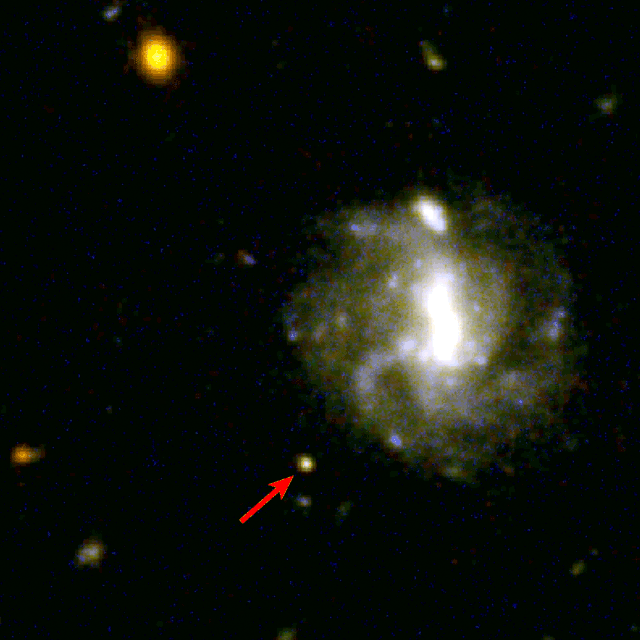Monstrous ‘Kilonova’ Explosions May Be Showering a Nearby Galaxy in Gold
The universe's most massive objects are crashing into each other, and they're leaving a rain of gold and platinum behind them.

Mergers of this magnitude are so violent they rattle the fabric of space-time, releasing gravitational waves that spread through the cosmos like ripples on a pond. These mergers also fuel cataclysmic explosions that create heavy metals in an instant, showering their galactic neighborhood in hundreds of planets' worth of gold and platinum, the authors of the new study said in a statement. (Some scientists suspect that all the gold and platinum on Earth formed in explosions like these, thanks to ancient neutron-star mergers close to our galaxy.)
Astronomers at the Laser Interferometer Gravitational-Wave Observatory (LIGO) got concrete proof that such mergers occur when they detected gravitational waves pulsing out of a stellar crash site for the first time in 2017. Unfortunately, those observations began only about 12 hours after the initial collision, leaving an incomplete picture of what kilonovas look like.
For their new study, an international team of scientists compared the partial dataset from the 2017 merger with more complete observations of a suspected kilonova that occurred in 2016 and was observed by multiple space telescopes. By looking at the 2016 explosion in every available wavelength of light (including X-ray, radio and optical), the team found that this mysterious explosion was nearly identical to the well-known 2017 merger.
"It was a nearly perfect match," lead study author Eleonora Troja, an associate research scientist at the University of Maryland (UMD), said in the statement. "The infrared data for both events have similar luminosities and exactly the same time scale."
So, confirmed: The 2016 explosion was indeed a massive galactic merger, likely between two neutron stars, just like the 2017 LIGO discovery. What's more, because astronomers began observing the 2016 explosion moments after it began, the authors of the new study were able to catch a glimpse of the stellar debris left behind the blast, which was not visible in the 2017 LIGO data.
"The remnant could be a highly magnetized, hypermassive neutron star known as a magnetar, which survived the collision and then collapsed into a black hole," study co-author Geoffrey Ryan, a postdoctoral fellow at UMD, said in the statement. "This is interesting, because theory suggests that a magnetar should slow or even stop the production of heavy metals," however, large amounts of heavy metals were clearly visible in the 2016 observations.
This is all to say, when it comes to understanding collisions between the most massive objects in the universe — and the mysterious rains of bling that result — scientists still have more questions than answers.
Get the world’s most fascinating discoveries delivered straight to your inbox.
- The 12 Strangest Objects in the Universe
- 15 Amazing Images of Stars
- 9 Strange Excuses for Why We Haven't Met Aliens Yet
Originally published on Live Science.

Brandon is the space / physics editor at Live Science. With more than 20 years of editorial experience, his writing has appeared in The Washington Post, Reader's Digest, CBS.com, the Richard Dawkins Foundation website and other outlets. He holds a bachelor's degree in creative writing from the University of Arizona, with minors in journalism and media arts. His interests include black holes, asteroids and comets, and the search for extraterrestrial life.



